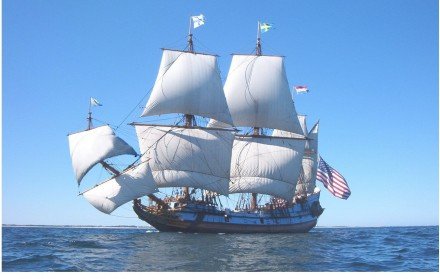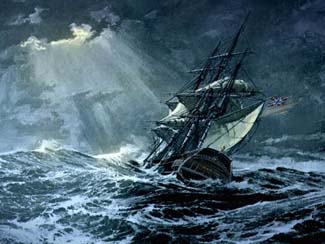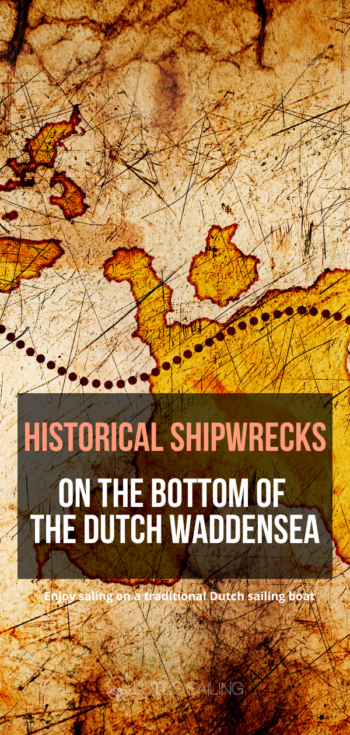The history of the many shipwrecks in the Wadden Sea
The Wadden Sea is very rich in heritage, not only in the form of special nature reserves, but also because of the many treasures at the bottom of the sea.
Over the past centuries, quite a few ships have perished around the Wadden Islands. This is because the Wadden Sea is very highly influenced by man: it is one of the most diked seas in the world. This has had a huge impact on the current and therefore also on the bottom of the Wadden Sea

The many shipwrecks around Texel
Especially around the island of Texel there are many historic shipwrecks in the Wadden Sea and the nearby North Sea.
Ships were sinking all over the world, many of them from the United East India Company (VOC) and the West India Company (WIC). However, there was a reason why they went down in Dutch waters, particularly near Texel.
The Rede of Texel
Can you still imagine that “our Texel”, with its sheep and cosy terraces, was once a very important trading post? Where giant remarkable ships as you still see them in films like Pirates of the Caribbean were moored on a daily basis. with exotic merchandise, from all corners of the world.
As early as the fifteenth century, commercial ships from Amsterdam and the Zuiderzeehavens near Texel anchored to wait for favourable winds to sail. They call such an anchorage a ‘Rede’. This was a relatively sheltered place where ships could anchor reasonably safely.
Relative and reasonable certainly did not mean absolute safety, and it turned out that there could be storms and sometimes dozens of ships must have sunk during these storms some days.
But there was more and more overseas trade and so Texel’s rede increasingly took on the function of an outport and gathering place for the growing merchant and war fleet. In the seventeenth century there were often more than 100 ships waiting to set sail: merchants of the VOC and WIC, warships, whalers and grain ships. During storms, therefore, many of these ships were shipwrecked. when they thought they were safely anchored.

How many ships perished in the Wadden Sea
Estimates based on historical data come from somewhere between five hundred and a thousand ships that must have perished in the Texel area. That is not to say that there are as many wrecks, especially today. Many ships were shattered during storms and washed ashore like wreckage on the beaches of the Wadden Islands. Often together with freight, household goods and other valuables. No wonder that beachcombing has been a true lifestyle on the Wadden Islands for many centuries.
Famous shipwrecks
Not all wrecks found or not yet found appeal equally to the imagination. Even though the history of these ships – surrounded by many exciting myths – has been preserved for centuries. There are still a few sagas that are passed on from father to son.
The ship Aanloop Molengat
In 1984, by coincidence, a fisherman stumbled upon the wreckage of an unknown ship from the 17th century.
The fishing net of his boat stuck to what later turned out to be a wooden shipwreck. It was at a depth of 16 metres, on the bottom of the North Sea. Close to the Molengat, the wreck lay on the bottom of a stretch of water between Den Helder and Texel, which is why it was given the unoriginal name ‘Aanloop Molengat’ (Run-up to Molengat). From 1985 to 1999, the sunken vessel was the subject of the first underwater excavation in the Netherlands. Many enthusiasts in the field of underwater archaeology participated in these excavations. Soon it was possible to make a map of the ship, it turned out to be a 32-metre barge, with about twenty cannons on board.
Every time newly developed excavation techniques were invented they were applied and successfully. Eventually more than 3000 different objects were brought to the surface from the ship.

When did the Aanloop Molengat sink?
By carefully studying the cargo, it eventually became clear that the ship must have sunk in 1635 or shortly thereafter.
The ship was loaded with, among other things, luxury fabrics from Leiden. At that time, leads were attached to bales of textile on which, in this case, the year of production was engraved.
Which route did the Aanloop Molengat take before it went wrong?
The route of this ship could more or less be determined by the cargo that divers found in the ship all those centuries later.
In addition to the textile sheds, metals such as tin and lead were also found and they hoisted packets of cattle hides and Ivory from the ship to the surface. The combination of these goods says something about the trade route at that time.
The tin was found to have been brought from the Czech Republic to the Netherlands via Hamburg. The lead blocks came from Poland, the textile came not only from Leiden, but also from Delft and several cities in Belgium. Cattle hides and the Ivory Coast were not surprisingly traced back to Africa.
This gave rise to the suspicion that the Aanloop Molengat [helaas hebben ze nooit de originele naam kunnen achterhalen] was a so-called ‘street sailor’. Which means as much as it was a relatively large ship for its time. It was specially built to sail [de straat] to France via the canal. The load of tin and lead seemed to confirm this, they made weapons out of it and at that time the French were quite at odds with the Spaniards. No wonder, then, that those loads of weaponry were coming on.
Part of the cargo that turned up at Aanloop Molengat can be seen in the Juttersmuseum Kaap Skilon Texel.

The Lutine
The Lutine was a big warship of about 40 meters long and with 26 guns. It was built by order of the French navy in 1779 in Toulon, France, and was given the name ‘La Lutine’ which means ‘Devil of the swell’. After the revolution broke out and the French were chopped to shreds at the battle of Toulon years later, the French royalist feared that the ships would fall into the hands of the revolutionary. They donated the Lutine and an entire fleet of ships, with great haste to the English Navy.
She was rebuilt under the English flag and was given a whole tune of cannons, the numbers differ, but in the end it must have been 38. This made it one of the showpieces of the English Navy.
So a very special transport was ordered by rich English, with a precious cargo and a lot of big shots on board. the best captain was taken from the stable and the Lutin was deployed. In October 1799, the ship left Yarmouth with destination Hamburg to deliver a huge amount of gold and silver to support Hamburger merchants in crisis. England supplied enormous quantities of linen, cotton products and yarns at that time and this lucrative trade stagnated due to a lack of cash caused by the great unrest in Europe. The English saw their trade lost and decided to help the Hamburgers with a major investment. However, this investment would never reach Hamburg.

The downfall of the Lutin
On the night of 9 to 10 October 1799, things went wrong, it stormed just as it could only happen on the Wadden Sea. North of Vlieland and Terschelling, the Lutine sails too close to the coast, gets into trouble and sounds the alarm by making all the cannons roar.
This does not go unnoticed and a rescue operation soon starts from the Wadden Islands. The raging storm means that rescuers have to wait until the weather calms down.
It takes too long for the Lutin and she sinks. Only one of the 270 people on board is fished alive from the water by a pilot boat from Vlieland, or so the story goes. Who this person is has never become clear, something that Lloyd’s Bank in London found very annoying. The cargo was insured with them for an astronomical amount of money and without a witness who could tell what had happened, the bank could not shift the blame onto the captain and therefore the navy. But there was nothing else to do but pay out.
The treasure of the Lutin
In terms of today’s values, the Lutin must have carried valuables worth many millions of euros. The gold and silver of the Lutine was wrapped in wooden barrels, which must have opened over time. The cargo is scattered on the seabed over an area which is undoubtedly much larger than the hull of the wreck; submarine currents can easily disperse 5 kg gold bars.
Attempts to salvage the Lutin
Since 1800, there have been more than twenty serious salvage attempts, with cannons and other items being fished, but only a few of those attempts have actually salvaged gold and silver bars, and by no means all of them.
The loss of the Lutin wreckage
A spectacular salvage attempt on the Lutine took place in the summer of 1938 with the huge dredger Karimata from a large mining company. The vessel was destined for the Dutch East Indies, but could be nicely tested this way.
The salvage attempt was probably partly intended as a publicity stunt for the mining company. It attracted crowds of people who were eager to go on an excursion to the Karimata. The salvage ship was anchored above the wreckage and made daily attempts to retrieve some of the lost treasure of the Lutin.
Unfortunately, the wreck of the Lutine was destroyed by all this enthusiasm and the excavators. Only one gold bar was brought to the surface – and it may have been fraudulent too, to improve the publicity stunt.
To this day, the Lutine’s ship’s treasure still appeals to the imagination and every year many attempts are still being made to find the extremely valuable cargo of this sailing ship or what is left of it.
Even with today’s technological knowledge, no equipment has yet been invented that is good enough to look into the seabed.
What also complicates the search for wrecks and their contents in this area are the enormous currents that rage through the sea lanes between the islands at every tide. It is precisely in these places that many ships have decayed and it is precisely this enormous current that sometimes causes wrecks to lie visibly on the seabed and, a little later, to disappear completely under a thick layer of sand.
The famous ship’s bell of the Lutine
During the salvage of 1857-1860 not only gold and silver bars were extracted, but also the ship’s bell. That Lutine Bell was hung in Lloyds’ main building in London and still hangs there to this day. If it is hit, it often means a total loss of a ship insured via Lloyds!
Discover the Wadden Sea and its wrecks on a historic sailing ship
Are you getting excited about this and would you like to take a look at the various Wadden Islands yourself, to see what they have found of the Lutine and other ships?
For example in the Wrecks Museum or museum the preserved huys on Terschelling.
Then book a sailing trip on a traditional sailing ship from the port of Harlingen. Discover for yourself the myths behind the many wrecks around the Wadden Islands.


